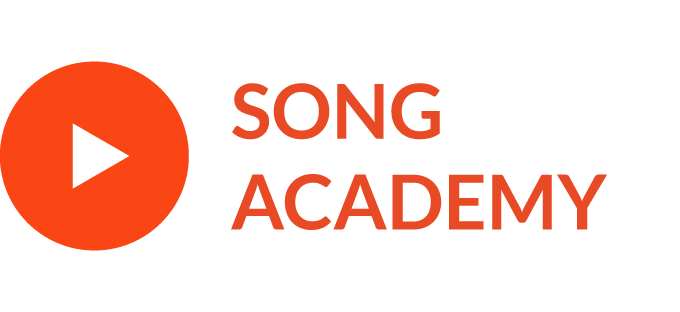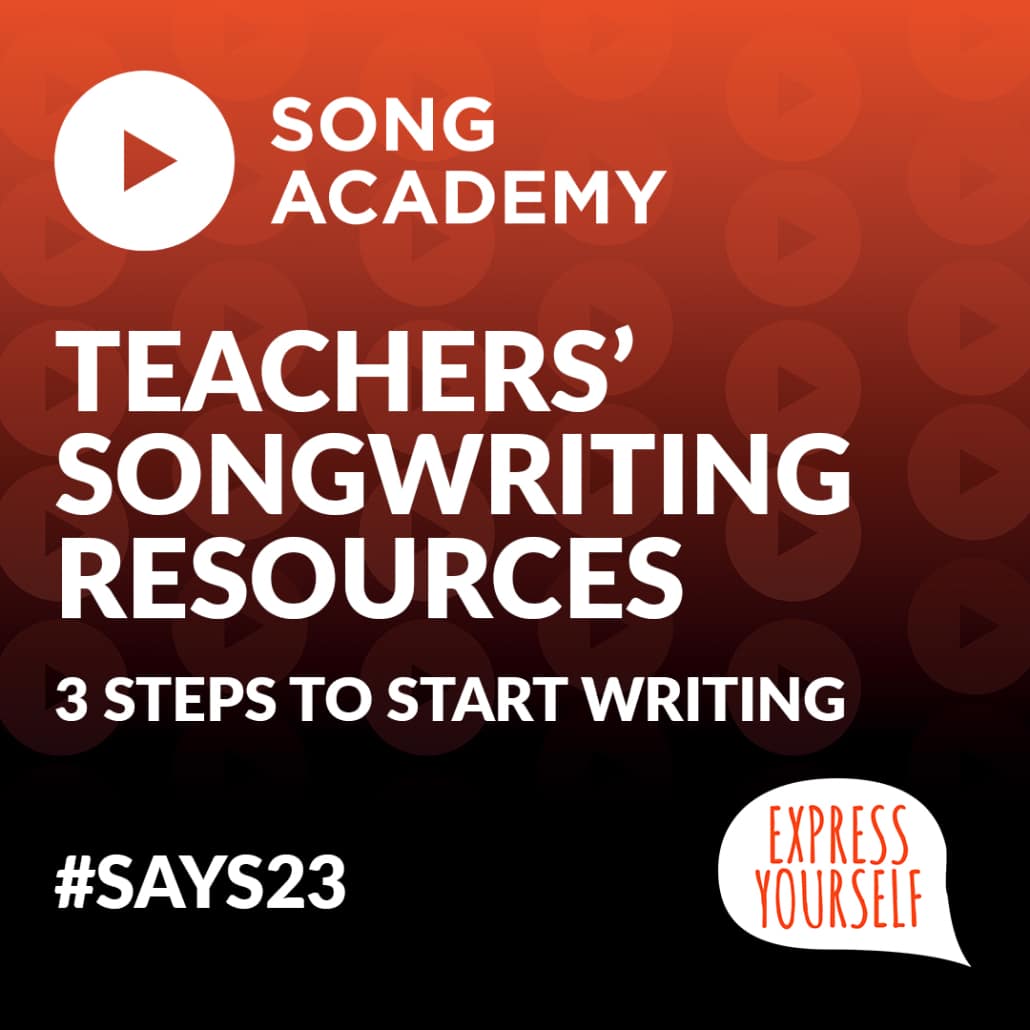Songwriting resources for Teachers – 3 steps to student songwriting
Inspire your students to write their own songs & give them tools to get started. Songwriting helps students find their voice & find their tribe.
Music is central to youth culture. One of the key questions that young people ask when they first meet is “what music do you listen to?” It matters to them because it’s part of defining who they are. It is also well-researched that music-making develops creativity, confidence, mental agility and mental health in young people. It provides an opportunity for students to shine in the limelight with solo performances and collaborate as one with others when playing in ensembles. In addition, music can be used in other academic subjects as a powerful way to increase young people’s motivation to learn, articulate what they’ve learned, and help memory retention.
In music education, songwriting provides an inspiring context for students to practice the musical elements they’ve learned in the music curriculum and bring them to life with their creative compositions, as well as practicing their skills of figurative speech learned in their English lessons.
The amount of songwriting taught in school music programs varies widely, but it’s an important opportunity that we should try to provide for students. By learning songwriting, students find their voice and express themselves in all new ways. Here are 3 steps to get started with your students:
Step 1 ― Creating a strong concept and an engaging title
Listening to some songs in different genres is a good step for students to get a feel for the style of song they’d like to write and the topics they want to speak up about. This list of songs is a great place to start.
One of the key components, and biggest challenges, of songwriting is trying to express common, relatable feelings in an original and interesting way. The more inventive students can be when describing feelings or experiences (for example, the pressures and joys of growing up and living in our society), the better. These are two exercises students can try when starting a song:
• Have students select five things in their bedroom (chair, window, guitar, books, etc.) and then turn them into interesting song titles. For example: Bed – Safe Haven, Chair – Where I’ll Stay, Guitar – Broken Strings, Books – Read All About It.
• Encourage students to find a quote they like ― For example, “It is never too late to be what you might have been,” “an obstacle is often a stepping stone,” or “to avoid criticism, say nothing, do nothing, be nothing,” and use that as the main concept to build around.
Step 2 – Getting started with writing
Thinking of their object or quote, encourage students to focus their senses on it and write freely for 10 minutes non-stop. Anything goes. All seven senses should be involved in the process: sight, hearing, smell, taste, touch, organic (awareness of inner bodily functions, e.g. heartbeat) and kinesthetic (your sense of relation to the world around you. For example, when the train you’re on is standing still and the one next to it moves, your kinesthetic sense goes crazy!)
After this 10-minute writing exercise, have students think more about the lyrics they’ve written and write some rhyming couplets. Remember that lyrics have a rhythm and using different rhyming schemes can help to shape the lyrics and make songs more engaging. The best two rhyming schemes to start with are A-A-B-B and A-B-A-B.
Once students’ rhyming couplets have been written, they can now count the syllables in each line. If they count the syllables while tapping their foot (creating a tempo), they’ll notice that they’re naturally creating a rhythm. This can be extremely helpful when working out a melody and figuring out how long the song’s lines are going to be.
Next, ask students to think about creating some metaphors with the words that are connected to their song to give it a unique twist. They can write a list of five interesting adjectives, then a list of five interesting nouns, thinking about each combination and writing some sentences. Then, a list of five nouns and five interesting verbs, and repeat the process of thinking about combinations, and so on. Once students have loads of lyrical ideas, they can organize them into different sections to build the song’s story.
Suggested Song Structure:
• Verse 1 — Introduces the song’s message and sets the scene (four lines, A-A-B-B or A-B-A-B)
• Pre Chorus — Link between the verse and chorus, builds up both melodically and lyrically (two lines, A-A or A-B)
• Chorus — Main message of the song, catchiest part and most memorable part of the song (four lines, A-A-B-B or A-B-A-B)
• Verse 2 — Continuing the explanation of the song, solidifying the message and introducing new imagery; lyrics change, melody stays the same as verse 1, possibly with a few small changes to keep it interesting (four lines, A-A-B-B or A-B-A-B)
• Bridge or Middle Eight — A contrasting section that brings the song to a new level and adds depth; rhythmically and melodically the song changes, looking at the message from a different viewpoint (four or eight lines, A-A-B-B or A-B-A-B)
• Chorus — Repeat (can add hooks to the outro of it)
• Outro — The closing passage. It can be instrumental or vocal
Step 3 ― Creating a chord progression and adding a melody
It’s at this stage when we put music together with the lyrics. Sometimes this may involve students playing instruments, but technology is also hugely beneficial in modern music-making. Soundtrap is a recommended tool for student songwriters to add instrumental parts and beats.
Chord progressions are the foundation of pop music. A chord is a collection of notes played at the same time, and a chord progression is when a series of chords are played in a sequence. There are three main chord progressions for songs in popular music:
• I, IV, V (Which is C, F, G when played in the key of C Major)
• I, V, VI, IV (C, G, Am, F in C Major)
• I, VI, II, V (C, Am, Dm, G in C Major)
Once you become familiar with these progressions, you’ll find yourself hearing them again and again in popular songs. For the next step in songwriting, each student should choose a key for their song and select one of the three chord progressions. They can play the chords and improvise different melodies for the lyrics. It works well to have different chord progressions for the verses, chorus, and bridge of the song. If students are using Soundtrap, they can test out many options.
Taking it to the next step
Once students get started with their songwriting, it’s hard to stop. Encourage them to continue exploring and trying new ideas. And, if they feel really strongly about what they’ve created ― and want to continue developing the idea more, they can enter The Song Academy Young Songwriter 2022 competition, which brings together students from around the globe. When students find their voice through song, they are excited to make sure it’s heard.
More information on The Young Songwriter 2022 competition and how to enter.









